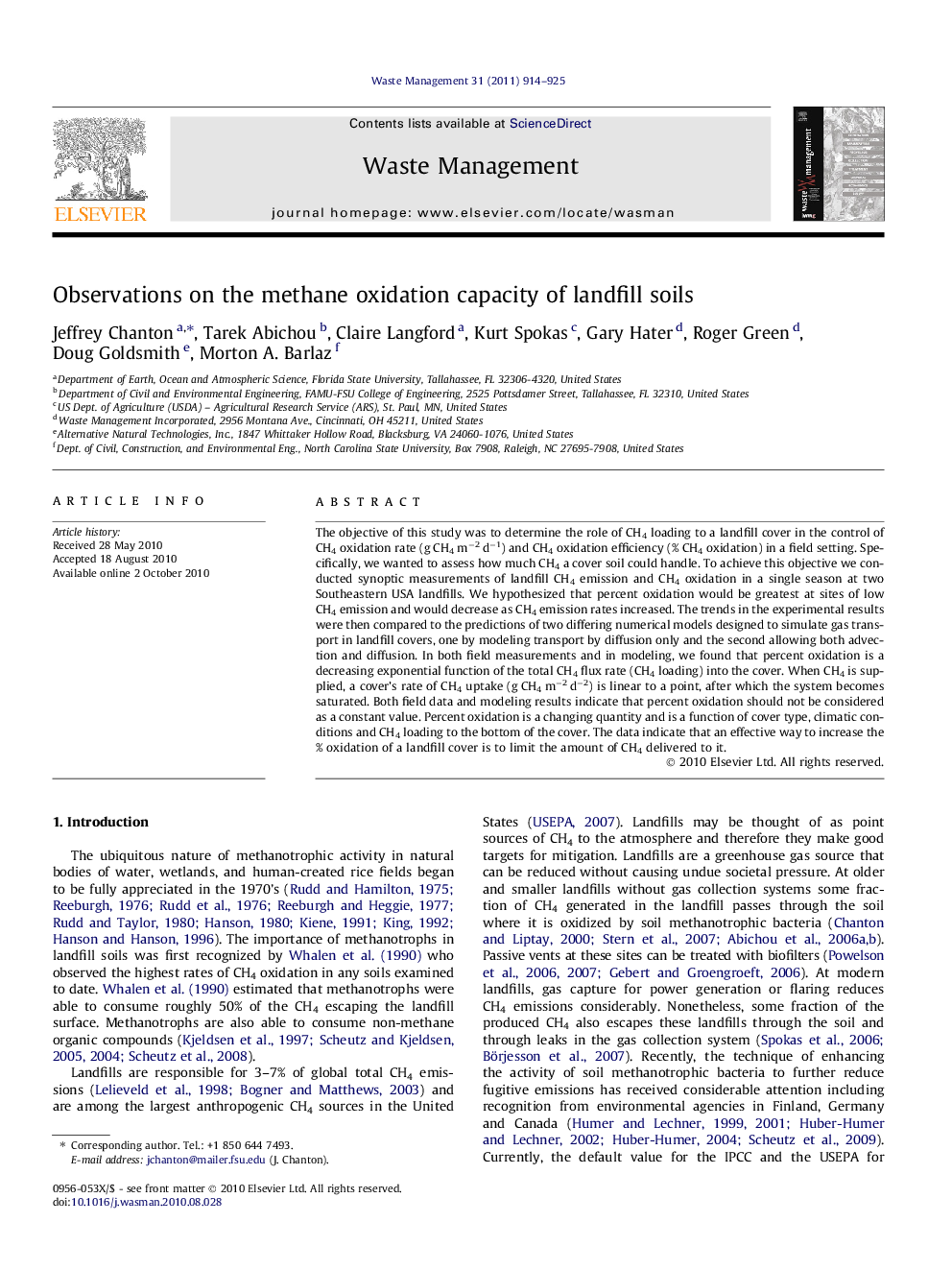| Article ID | Journal | Published Year | Pages | File Type |
|---|---|---|---|---|
| 4472456 | Waste Management | 2011 | 12 Pages |
The objective of this study was to determine the role of CH4 loading to a landfill cover in the control of CH4 oxidation rate (g CH4 m−2 d−1) and CH4 oxidation efficiency (% CH4 oxidation) in a field setting. Specifically, we wanted to assess how much CH4 a cover soil could handle. To achieve this objective we conducted synoptic measurements of landfill CH4 emission and CH4 oxidation in a single season at two Southeastern USA landfills. We hypothesized that percent oxidation would be greatest at sites of low CH4 emission and would decrease as CH4 emission rates increased. The trends in the experimental results were then compared to the predictions of two differing numerical models designed to simulate gas transport in landfill covers, one by modeling transport by diffusion only and the second allowing both advection and diffusion. In both field measurements and in modeling, we found that percent oxidation is a decreasing exponential function of the total CH4 flux rate (CH4 loading) into the cover. When CH4 is supplied, a cover’s rate of CH4 uptake (g CH4 m−2 d−2) is linear to a point, after which the system becomes saturated. Both field data and modeling results indicate that percent oxidation should not be considered as a constant value. Percent oxidation is a changing quantity and is a function of cover type, climatic conditions and CH4 loading to the bottom of the cover. The data indicate that an effective way to increase the % oxidation of a landfill cover is to limit the amount of CH4 delivered to it.
